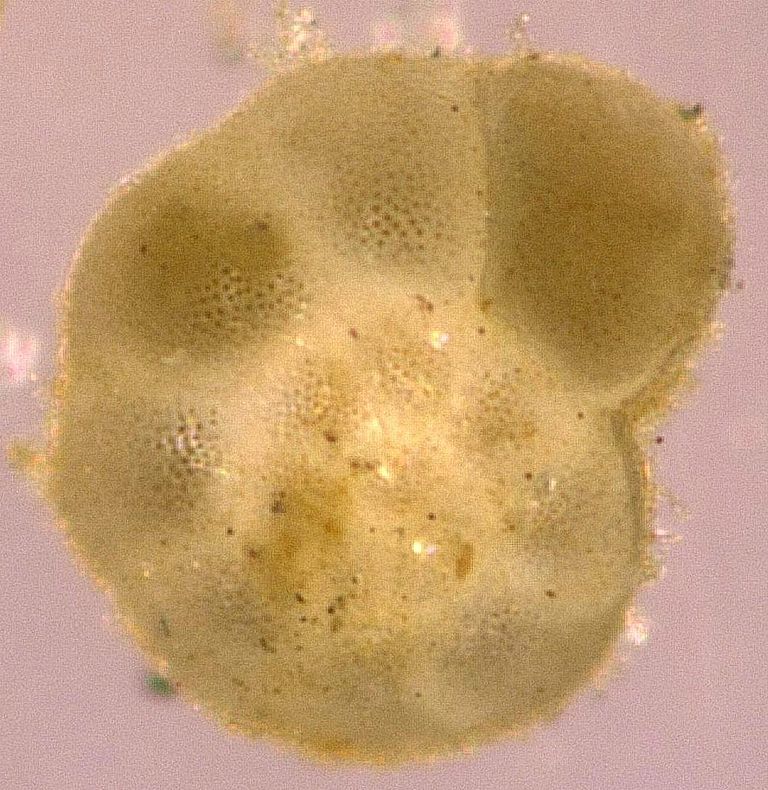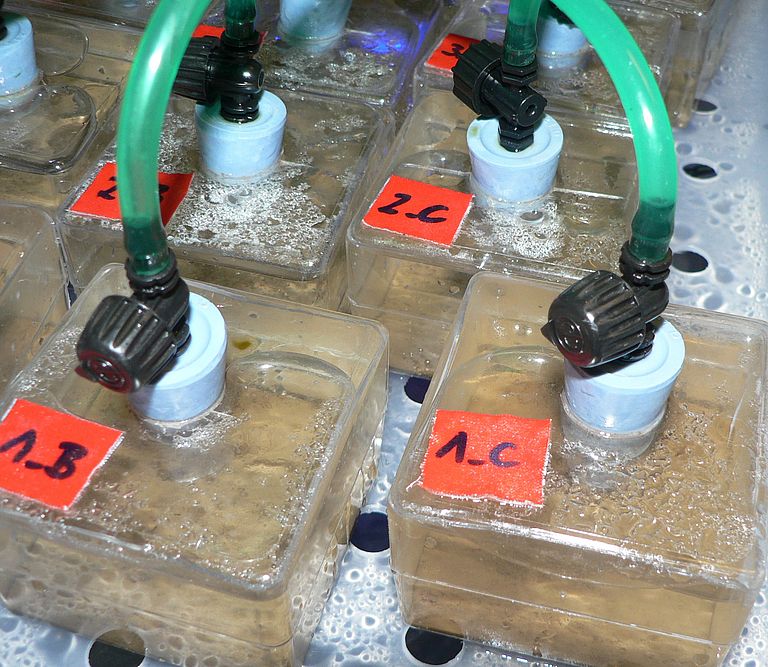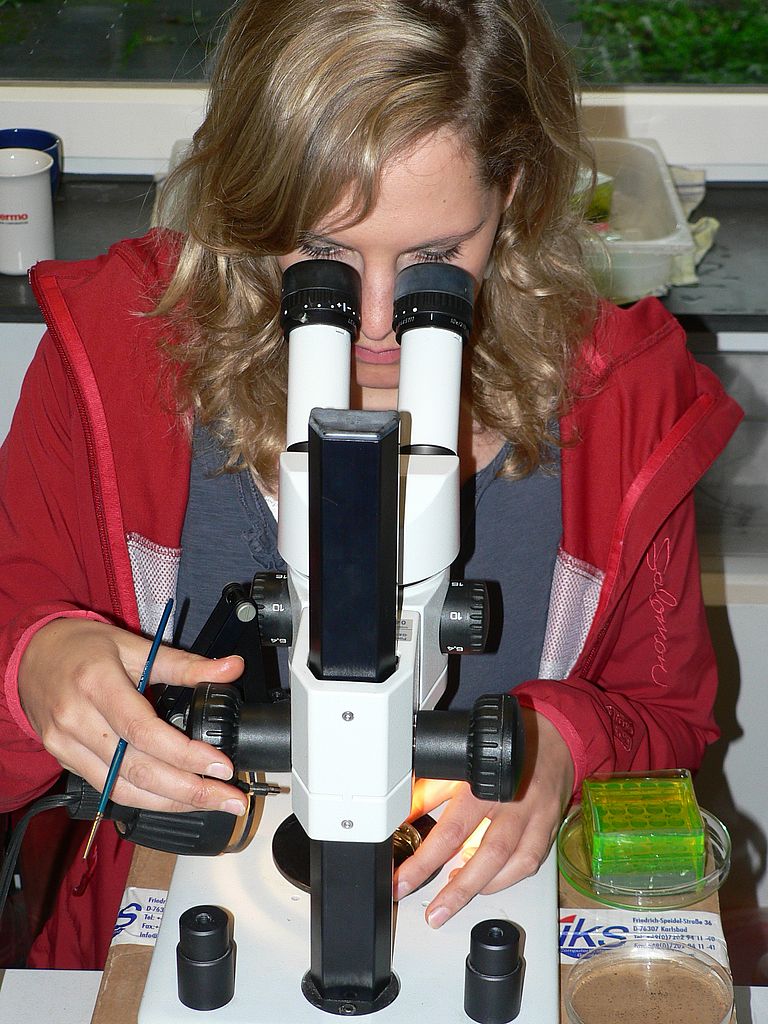Protected by the Seabed: Unicellular Organisms Tolerate Ocean Acidificationen
GEOMAR scientists simulate future climate scenarios
The oceans are becoming more acidic. This fact is due to a steadily increasing atmospheric CO2 content. The permanent gas exchange between atmosphere and ocean also leads to an increased concentration of CO2 in the ocean. Here, the dissolved CO2 reacts with water to form carbonic ac-id. As a consequence of this reaction, the pH value of seawater is lowered, and the concentration of carbonate decreases. This change in ocean chemistry especially harms organisms that need carbonate to form their carbonate shells and skeletons. Therefore, it is expected that the so-called foraminifera, single-celled organisms that build their shells from carbonate, are particularly affected. Accordingly, previous studies demonstrated reduced growth and - in the worst case scenario - the dissolution of the complete foraminiferal shell. However, Dr. Kristin Haynert from GEOMAR Helmholtz Centre for Ocean Research Kiel, along with her colleagues from GEOMAR, Dr. Jörn Thomsen and Dr. Joachim Schönfeld (Project Manager), as well as other colleagues from France and Trinidad, was able to show in a study that - under certain conditions - foraminifera can cope very well with increased CO2 conditions. The study was now published in the international journal Biogeosciences.
Dr. Haynert and her colleagues have studied the effects of increased CO2 levels on foraminifera in the Baltic Sea. In this marginal sea, the unicellular organisms live on or in the seabed. "In an earlier field study, we already observed that the foraminifera at the bottom of the Baltic Sea are already exposed to higher CO2 levels than are expected in the oceans for the year 2100. According to our current knowledge, these conditions would cause their shells to dissolve," says Dr. Haynert.
To investigate the long-term consequences of ocean acidification in the lab, Dr. Haynert and her colleagues chose an unprecedented experimental approach. In contrast to previous laboratory studies, they did not remove the foraminifera from the sediment but held them for the first time ever for six months in their largely natural habitats under elevated CO2 levels. The chosen CO2 levels corresponded to the currently observed CO2 levels and to conditions that are expected in the future in the Baltic Sea. The surprising result: Surrounded and protected by sediment, the unicellular organisms tolerate very high CO2 levels.
For these adaptive foraminifera, one crucial requirement is necessary: A high concentration of carbonate must be present in the top few centimeters of the seabed. The decisive factor here is that degradation processes in the sediment consume oxygen, but also produce carbonate at the same time. Therefore, the concentration of carbonate in the so-called pore water is significantly higher than in the overlying water. The result: The habitat of the foraminifera is rarely undersaturated with respect to carbonate. "This way, the shells are protected from severe dissolution, and foraminifera colonize a habitat that allows them to survive even under high CO2 concentrations - a crucial factor that has been overlooked in previous studies," says Dr. Haynert.
The results of this study underscore the need to understand the natural processes in the soil habitat of living organisms in order to better assess the impacts of climate change.
Original publication:
Haynert, K., Schönfeld, J., Schiebel, R., Wilson, B., and Thomsen, J. (2014): Response of benthic foraminifera to ocean acidification in their natural sediment environment: a long-term culturing experiment, Biogeosciences, 11, 1581-1597, http://dx.doi.org/10.5194/bg-11-1581-2014
High resolution images:
Living foraminifera of the species Ammonia aomoriensis.jpg
Culture vessels in which the foraminifera were held.jpg
Dr. Kristin Haynert working at the binocular microscope.jpg
Contact:
Jan Steffen (Communication & Media), Phone: +49-431 600 2811, presse(at)geomar.de





